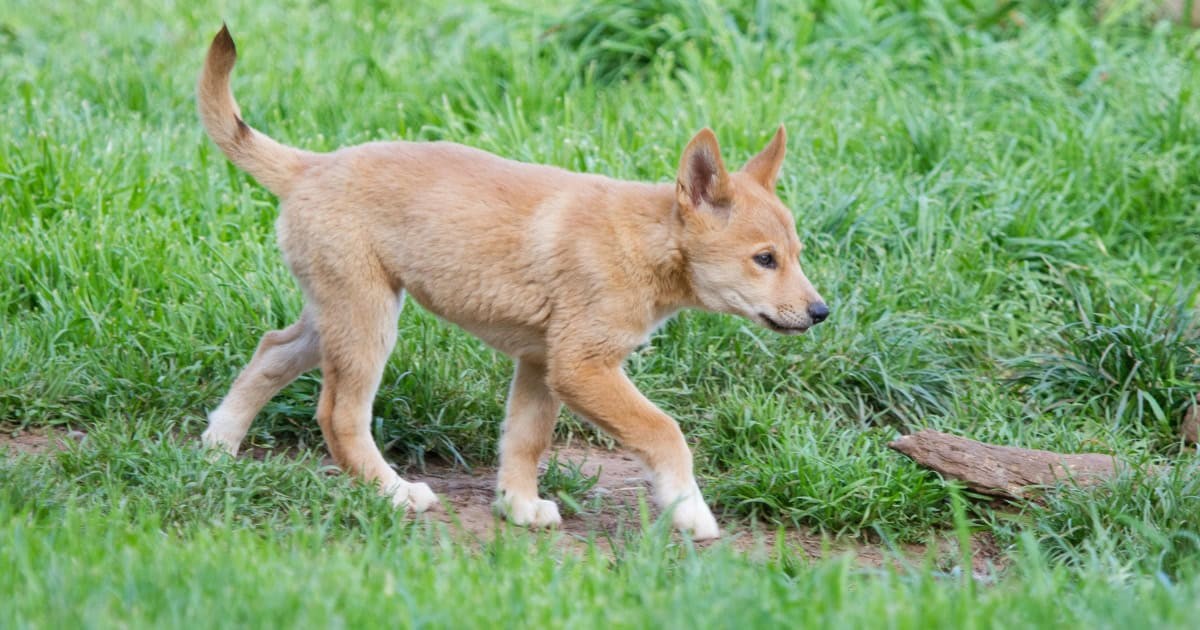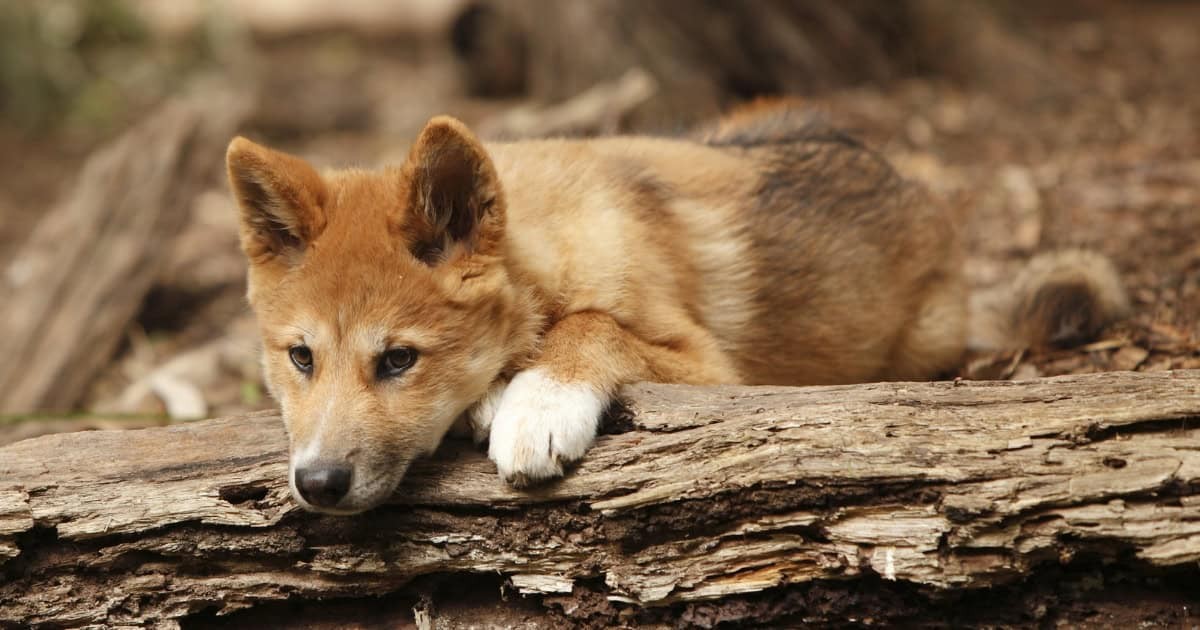Dingoes as pets can be wonderful companions, but owning a native dog requires careful consideration; PETS.EDU.VN offers comprehensive insights and guidance. Understanding the realities of keeping a dingo is essential before bringing one into your home. This includes legal considerations, daily care needs, and the unique behavioral traits of these fascinating animals.
1. Understanding the Dingo: Nature’s Wild Child
The dingo, Canis lupus dingo, is an iconic Australian canid with a complex history and distinct characteristics. Before considering one as a pet, it’s crucial to understand their origins, physical attributes, and natural behaviors.
1.1. Dingo Origins and Evolution
The exact origins of the dingo are debated, but current scientific consensus points to their arrival in Australia from Asia thousands of years ago. Genetically distinct from domestic dogs, dingoes have evolved to thrive in the Australian environment, playing a vital role in the ecosystem.
1.2. Physical Characteristics
Dingoes share some physical similarities with domestic dogs, but key differences set them apart:
- Build: More muscular with a thicker neck.
- Snout: Longer and more slender.
- Tail: Bushy and often carried low.
- Coat: Typically ginger, but can range from creamy white to black.
1.3. Natural Dingo Behavior
Understanding natural dingo behavior is essential for anyone considering dingo ownership. Key traits include:
- Pack Animals: Dingoes are social animals with a strong pack hierarchy.
- Territoriality: They are highly territorial and require secure environments.
- Hunting Instincts: Dingoes have a strong prey drive, which can pose challenges in a domestic setting.
- Communication: Primarily communicate through howling, body language, and scent marking.
2. The Legal Landscape: Can You Legally Own a Dingo?
Before even considering the practicalities of dingo ownership, it’s essential to understand the legal regulations in your area. Laws regarding dingo ownership vary widely.
2.1. Australian Regulations
Dingo ownership regulations in Australia vary by state and territory:
| State/Territory | Regulations |
|---|---|
| New South Wales | Legal to keep dingoes as pets without a permit. |
| Western Australia | Legal to keep dingoes as pets without a permit. |
| Victoria | Permit required to keep dingoes as pets. |
| Northern Territory | Permit required to keep dingoes as pets. |
| Queensland | Illegal to keep dingoes as pets. |
| Tasmania | Illegal to keep dingoes as pets. |
| South Australia | Illegal to keep dingoes as pets. |


2.2. International Regulations
Outside of Australia, dingo ownership is rare, and regulations vary depending on the country and local laws. It is essential to research local, state, and federal regulations before considering bringing a dingo into your home. PETS.EDU.VN can help you navigate the complexities of animal ownership laws.
2.3. Importance of Compliance
Owning a dingo without the proper permits or in a prohibited area can result in hefty fines, confiscation of the animal, and even legal action. Compliance with local regulations is not only a legal requirement but also ensures the welfare of the animal and the safety of the community.
3. Is a Dingo the Right Pet for You? Self-Assessment
Owning a dingo is vastly different from owning a domestic dog. They require a unique level of commitment, understanding, and specialized care. Before considering dingo ownership, honestly assess your lifestyle, resources, and capabilities.
3.1. Lifestyle Considerations
- Time Commitment: Dingoes require significant time for exercise, training, and socialization.
- Activity Level: They are highly active animals that need ample space to roam and explore.
- Travel: Dingoes do not adapt well to new environments and cannot be placed in boarding kennels.
- Other Pets: Dingoes are not suitable for households with cats, birds, small animals, or livestock.
3.2. Resource Requirements
- Enclosure: Dingoes need a secure enclosure with a minimum area of 30m2.
- Fencing: A high fence (at least 2.2m) with a full roof or inward-facing overhang is necessary to prevent escapes.
- Veterinary Care: Dingoes require specialized veterinary care, including vaccinations and parasite control.
- Diet: A high-quality, meat-based diet is essential for their health and well-being.
3.3. Personal Capabilities
- Experience: Prior experience with dog training and handling is highly recommended.
- Patience: Dingoes can be challenging to train and require consistent, patient guidance.
- Dominance: You must establish yourself as the leader of the pack to effectively manage a dingo’s behavior.
- Commitment: Owning a dingo is a long-term commitment that requires dedication and perseverance.
4. Creating a Suitable Habitat for Your Dingo
If you’ve carefully considered the legal aspects, lifestyle requirements, and your personal capabilities, and you’re still confident that a dingo is the right pet for you, the next step is to create a suitable habitat.
4.1. Enclosure Design
- Size: A minimum area of 30m2 is recommended, but larger enclosures are always better.
- Fencing: Use sturdy, high-quality fencing materials to prevent escapes.
- Roofing: A full roof or inward-facing overhang is essential to prevent climbing.
- Digging Prevention: Bury the fence deep into the ground or use concrete to prevent digging.
4.2. Shelter and Bedding
- Weatherproof Shelter: Provide a weatherproof sleeping area to protect your dingo from the elements.
- Comfortable Bedding: Use soft, comfortable bedding materials such as straw, blankets, or dog beds.
4.3. Environmental Enrichment
- Digging Pit: Provide a designated digging area to satisfy their natural instincts.
- Climbing Structures: Offer climbing structures such as logs or platforms to encourage exercise and exploration.
- Water Features: A water bowl or small pool can provide enrichment and help keep your dingo cool in hot weather.
5. Dingo Diet and Nutrition: Fueling the Wild Within
Dingoes are carnivores with a natural diet consisting of meat-based protein. In captivity, providing a balanced and nutritious diet is crucial for their health and well-being.
5.1. Wild Dingo Diet
In the wild, dingoes prey on a variety of animals, including:
- Possums
- Kangaroos
- Wombats
- Rabbits
- Birds
5.2. Domestic Dingo Diet
Domestic dingoes can thrive on a diet that mimics their natural food sources:
- High-Quality Commercial Dog Food: Choose a brand that is high in protein and low in carbohydrates.
- Raw Meat: Supplement their diet with raw meat such as beef, chicken, or lamb.
- Bones: Provide raw, meaty bones for chewing and dental health.
5.3. Dietary Considerations
- Avoid Processed Foods: Avoid feeding your dingo processed foods, table scraps, or sugary treats.
- Monitor Weight: Adjust food portions to maintain a healthy weight.
- Fresh Water: Always provide access to fresh, clean water.
6. Training and Socialization: Taming the Wild Spirit
Training and socialization are essential for managing a dingo’s behavior and ensuring its well-being. However, it’s important to understand that dingoes are not domestic dogs and require a specialized approach.
6.1. Early Socialization
- Exposure to People: Expose your dingo to a variety of people from a young age to help them become comfortable around strangers.
- Exposure to Environments: Introduce your dingo to different environments, such as parks, trails, and urban areas.
- Positive Reinforcement: Use positive reinforcement techniques, such as treats and praise, to reward good behavior.
6.2. Basic Obedience Training
- Start Early: Begin training as soon as you bring your dingo home.
- Consistency: Be consistent with your commands and expectations.
- Patience: Dingoes can be challenging to train, so be patient and persistent.
- Short Sessions: Keep training sessions short and engaging to maintain your dingo’s attention.
6.3. Addressing Behavioral Issues
- Professional Help: Consult with a professional dog trainer or behaviorist experienced with dingoes.
- Identify Triggers: Identify the triggers that cause your dingo to exhibit unwanted behaviors.
- Management Techniques: Use management techniques, such as confinement and redirection, to prevent unwanted behaviors.
7. Health and Well-being: Caring for Your Dingo’s Physical Needs
Dingoes are susceptible to many of the same health problems as domestic dogs, but they also have unique health considerations. Regular veterinary care is essential for maintaining their health and well-being.
7.1. Vaccinations and Parasite Control
- Vaccinations: Vaccinate your dingo against parvovirus, hepatitis, and distemper.
- Parasite Control: Regularly treat your dingo for fleas, heartworm, roundworm, and tapeworm.
7.2. Common Health Problems
- Hip Dysplasia: A genetic condition that can cause pain and lameness.
- Elbow Dysplasia: A similar condition that affects the elbow joint.
- Progressive Retinal Atrophy (PRA): A degenerative eye disease that can lead to blindness.
- Dental Problems: Dingoes are prone to dental problems, such as tartar buildup and gum disease.
7.3. Preventative Care
- Regular Checkups: Schedule regular veterinary checkups to monitor your dingo’s health.
- Dental Hygiene: Brush your dingo’s teeth regularly to prevent dental problems.
- Weight Management: Maintain a healthy weight to reduce the risk of obesity-related health problems.
8. Dingo Behavior: Understanding Their Unique Traits
Understanding the behavior of your dingo is crucial to maintaining a harmonious relationship. While they share similarities with domestic dogs, their wild instincts and unique communication methods require special attention.
8.1. Understanding Dingo Communication
- Howling: Dingoes use howling to communicate with their pack, mark territory, and attract mates.
- Body Language: Body language plays a crucial role in dingo communication, including posture, facial expressions, and tail movements.
- Scent Marking: Dingoes use scent marking to communicate with other dingoes and mark their territory.
8.2. Managing Dingo Behavior
- Establishing Dominance: Establish yourself as the leader of the pack by being consistent with your commands and expectations.
- Providing Mental Stimulation: Provide your dingo with plenty of mental stimulation to prevent boredom and behavioral problems.
- Redirecting Unwanted Behaviors: Redirect unwanted behaviors, such as digging and chewing, by providing alternative outlets.
8.3. Recognizing Stress Signals
- Panting: Excessive panting can be a sign of stress or anxiety.
- Yawning: Frequent yawning can indicate stress or discomfort.
- Lip Licking: Licking the lips can be a sign of anxiety or appeasement.
- Whale Eye: Showing the whites of the eyes can indicate fear or discomfort.
9. Finding a Dingo: Rescue vs. Breeder
If you’ve decided that you’re ready to own a dingo, the next step is to find one. There are two main options: rescue or breeder.
9.1. Dingo Rescue Organizations
- Sydney Dingo Rescue: An organization dedicated to rescuing and rehoming dingoes in New South Wales.
- Dingo Den Animal Rescue: A rescue organization that provides care and adoption services for displaced dingoes.
9.2. Ethical Considerations
- Support Conservation: By adopting a dingo from a rescue organization, you’re helping to support dingo conservation efforts.
- Prevent Overpopulation: Adopting a dingo from a rescue organization helps to prevent overpopulation of dingoes in captivity.
- Provide a Home: You’re providing a loving home for a dingo in need.
9.3. Finding a Reputable Breeder
- Research: Research breeders thoroughly to ensure they are reputable and ethical.
- Visit the Facility: Visit the breeder’s facility to assess the living conditions and the health of the animals.
- Ask Questions: Ask the breeder questions about their breeding practices, health testing, and socialization methods.
- Red Flags: Be wary of breeders who are unwilling to answer questions or allow you to visit their facility.
10. Dingo Ownership: A Rewarding but Demanding Journey
Owning a dingo can be a rewarding experience, but it’s not for everyone. Dingoes require a unique level of commitment, understanding, and specialized care.
10.1. The Joys of Dingo Ownership
- Loyal Companionship: Dingoes form strong bonds with their owners and can be incredibly loyal companions.
- Intelligent and Trainable: Dingoes are intelligent animals that can be trained to perform a variety of tasks.
- Unique and Fascinating: Dingoes are unique and fascinating animals that can bring joy and wonder to your life.
10.2. The Challenges of Dingo Ownership
- Legal Restrictions: Dingo ownership is subject to legal restrictions in many areas.
- Specialized Care: Dingoes require specialized care, including a secure enclosure, a high-quality diet, and regular veterinary care.
- Behavioral Challenges: Dingoes can be challenging to train and manage due to their wild instincts.
- Time Commitment: Dingoes require a significant time commitment for exercise, training, and socialization.
10.3. Is Dingo Ownership Right for You?
Ultimately, the decision of whether or not to own a dingo is a personal one. Carefully consider your lifestyle, resources, and capabilities before making a decision. If you’re prepared to meet the unique challenges of dingo ownership, you may find it to be a rewarding and enriching experience.
Dingoes can be wonderful pets for individuals or families prepared to dedicate the time, resources, and understanding to meet their specific needs. Before making this important decision, explore the wealth of information available at PETS.EDU.VN. We offer expert advice, detailed guides, and a supportive community to help you navigate the world of pet ownership.
FAQ: Dingo Ownership
- Is it legal to own a dingo in my state?
- Check with your local government regarding rules for keeping pet dingoes in your area.
- What kind of enclosure does a dingo need?
- A yard with a minimum area of 30m2 and a fence that is 2.2m high OR 1.8m high but with a full roof or 45 degree inward-facing 60cm over-hang.
- What do dingoes eat?
- Dingoes are carnivores and eat a meat-based diet. Domestic dingoes can be fed high-quality commercial dog food or raw, meaty bones.
- How much exercise do dingoes need?
- Dingoes are very active and require high levels of exercise and stimulation. You should walk your dingo for up to 10km per day.
- Can dingoes be trained?
- Yes, but training a dingo is more difficult than training a dog. Training will need to be regularly reinforced.
- How long do dingoes live?
- Dingoes live for 15-20 years.
- Where can I buy a dingo?
- You can buy a dingo from Organizations such as Sydney Dingo Rescue and Dingo Den Animal Rescue.
- How much does it cost to own a dingo?
- The cost of owning a dingo varies depending on factors such as the cost of the animal, the cost of the enclosure, and the cost of veterinary care.
- Can dingoes live with other pets?
- Dingoes cannot live with pet cats, birds, small animals (rabbits, guinea pigs etc.) or livestock.
- What do I do if I can no longer care for my dingo?
- Contact a dingo rescue organization or animal shelter to see if they can take your dingo.
For more information on dingo ownership and care, please visit pets.edu.vn or contact us at 789 Paw Lane, Petville, CA 91234, United States or Whatsapp: +1 555-987-6543.

